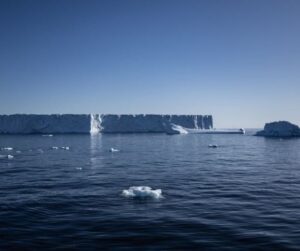Beijing is committed to its Belt and Road Initiative and moving north. No one should be surprised. In its geopolitical hubris, Beijing believes it has rights in the Arctic similar to those countries that actually border the sea lanes and ice continent. The People’s Republic of China (PRC) goes so far as to suggest it is a “near-Arctic State.” Additionally, the Chinese Communist Party (CCP), in its near-maniacal drive to be a dominant influence globally, now has expanded the initiative to include what it calls a “Polar Silk Road.” According to the latest US Defense Department China assessment:
“China has increased activities and engagement in the Arctic region since gaining observer status in the Arctic Council in 2013. In May 2019, China hosted the Arctic Circle China Forum in Shanghai where PRC Officials highlighted Beijing’s interest in expanding its partnership with countries along the Polar Silk Road. In January 2018, China published its first Arctic strategy that promoted a ‘Polar Silk Road’ and declared China to be a ‘near-Arctic State.’”
The Chinese Arctic Policy insists the development project “will bring opportunities for parties concerned” and “facilitate connectivity and sustainable economic and social development of the Arctic.” What is missing are the words “for China” at the end.
Countering China in the Arctic May Require Different Approach
The US military must understand that countering the PRC militarily may not be the most effective course of action. The People’s Liberation Army (PLA) has adopted a passive-aggressive approach to global dominance. Presence – being there – is the PLA’s most effective strategy. Planting the CCP flag is enough to begin the mischief. The idea that the PRC is a “near-Arctic State,” which somehow grants a level of geographic and economic privilege or accommodation, is ludicrous. Nevertheless, pushing that notion, Beijing managed to be admitted to the Arctic Council, along with Singapore, South Korea, Italy, Japan, and India, as observer nations in 2013. The other nations, however, knew enough geography not to stake a similar claim. “Observer status simply recognizes that a non-Arctic country’s interests are significant enough to allow it to sit in on meetings, albeit it the back row,” Sara Reardon explained in a 2013 New Scientist commentary.
The council’s permanent members are Sweden, Iceland, Finland, Norway, Canada, the US, and Russia. Initially, the purpose of the Arctic Council was to broker “international agreements on the Arctic protected areas, climate change research, and shipping routes, among others,” Reardon said. However, with Finland joining NATO and Sweden soon to be a member, it’s not difficult to see the alliance as “NATO minus 1” (Russia) with more of an Arctic military defense dimension. The Arctic is not immune to great power contests. China’s strengthening partnership with Russia will also manifest itself in Arctic competition for resources. The US is strongly opposing China’s growing interests in the Arctic. Consequently, Beijing is looking to satisfy its appetite for the northern region in other ways.
China May Turn to Russia for Support in the Arctic

(Photo by Sebnem Coskun/Anadolu Agency via Getty Images)
“Left with few other options, China is stepping up its investment in Russia as it looks to Moscow as its strategic partner of choice in the Arctic. This may prove to be China’s best path forward as both the climate and geopolitical competition heat up in the Arctic,” the Center for Strategic and International Studies (CSIS) posited in its April 2023 China assessment. The CSIS study echoes the sobering prediction of China’s intentions. “It’s growing physical footprint in the world’s most remote frontiers also serves to advance China’s broader strategic and military interests,” the report concludes.
To that end, NATO is holding Arctic exercises and training. Starting at the end of May and running through the second week of June, Sweden, Finland, Norway, and Denmark will host the “Arctic Challenge Exercise 2023” (ACE 23). The ACE 23 exercise will be the largest air exercise among the NATO nations in Europe this year, and it will include “approximately 120 aircraft and 2,700 personnel from 14 different nations,” a Swedish Armed Forces statement explained. In recent years the US military has recognized the need for more intense and relevant training for Arctic operations. “Thousands of US service members, five ships and more than 150 aircraft are scheduled to participate in Northern Edge 2023 (NE23-1), a joint field training exercise at various locations in and around Alaska, beginning today (May 4, 2023),” a Joint Base Elmendorf-Richardson, Alaska, press release announced.
US Army Practices for Arctic Combat
NE23-1 is complementary to training the American armed forces have initiated to prepare for cold weather maneuvers. For example, last year, approximately 8,000 US Army soldiers trained in subzero temperatures preparing for Arctic combat. “Tensions have been growing in the region for years, as nations stake claims to shipping routes and energy reserves that are opening up,” The New York Times reported. Additionally, the US is developing its presence in the Arctic. “On the West Coast of Alaska, the federal government is investing hundreds of millions of dollars to expand the port at Nome, which could transform into a deep-water hub servicing Coast Guard and Navy vessels navigating into the Arctic Circle,” The Times continued.
The PRC has a momentum that will be difficult to slow. However, with the Arctic in the US backyard and “NATO minus 1” being a formidable bulwark, meeting China’s growing presence with valuable exercises and training, the US and other Arctic stakeholders can present a united front to Beijing.
All opinions expressed are those of the author and do not necessarily represent those of Liberty Nation.
Do you have an opinion about this article? We’d love to hear it! If you send your comments to [email protected], we might even publish your edited remarks in our new feature, LN Readers Speak Out. Remember to include the title of the article along with your name, city, and state.
Please respect our republishing guidelines. Republication permission does not equal site endorsement. Click here

